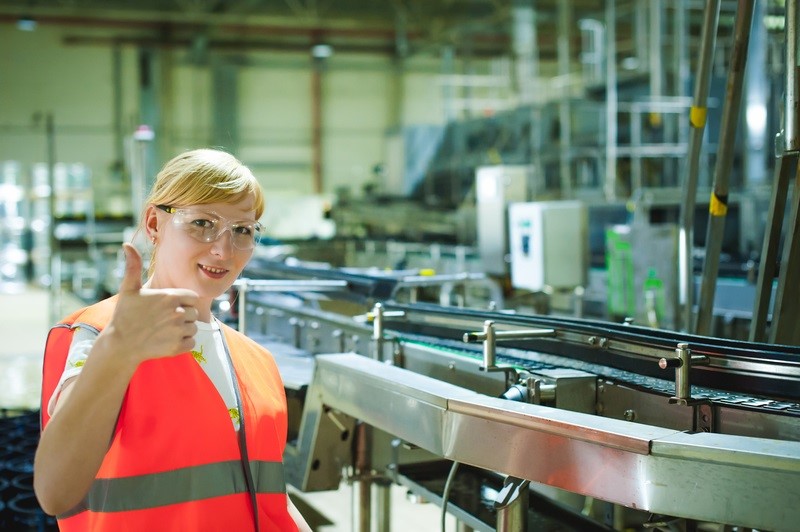Are you looking into adapting advanced technology in your food business? Leveraging advanced processing technology has become essential for businesses aiming to grow and thrive. With consumers demanding higher quality, safer, and more innovative food products, companies must adapt by incorporating cutting-edge technologies. This article explores the role of advanced processing technologies in the food business and highlights ten ways these innovations can help you grow your food business.
Advanced Processing Technologies in Food Businesses
Advanced processing technologies encompass a broad range of innovations designed to improve the efficiency, safety, and quality of food production. These technologies include automation, robotics, high-pressure processing, ultrasound technology, and more.
Food businesses can streamline operations, reduce costs, and meet the ever-evolving market demands by integrating these advancements. For instance, specialized potato processing equipment can significantly enhance the speed and consistency of potato product manufacturing, ensuring high-quality output while minimizing waste and labor costs.
Key Advanced Processing Technologies
Food businesses must understand key advanced processing technologies to enhance product quality, safety, and efficiency. The following technologies facilitate the creation of novel products, ensuring that businesses can adapt to changing consumer preferences and emerging market trends.
1. Automation and Robotics
Automation involves using machinery and technology to perform tasks with minimal human intervention. Robotics takes this a step further by introducing intelligent machines that can perform complex tasks. These technologies help speed up production, reduce errors, and enhance consistency.
For example, pizza chains are now utilizing automated systems to streamline their operations. Robotic systems handle dough preparation, topping application, and even baking. These robots ensure that each pizza is made to exact specifications, enhancing quality control and reducing food waste.
Additionally, automated packaging lines in snack food factories can sort, package, and label products at high speeds, drastically increasing productivity while maintaining stringent hygiene standards. This integration of automation and robotics improves efficiency and allows businesses to meet increasing consumer demands swiftly and reliably.
2. High-Pressure Processing (HPP)
HPP uses high pressure to eliminate harmful bacteria and pathogens in food without compromising its nutritional value and taste. This technology is particularly useful for extending product shelf life.
For instance, juice manufacturers often use HPP to ensure their products don’t have harmful microorganisms while maintaining the fresh taste and nutritional benefits of the fruits. Similarly, deli meat producers apply HPP to extend the shelf life of their products without the need for preservatives, making them more appealing to health-conscious consumers.
3. Ultrasound Technology
Ultrasound technology uses high-frequency sound waves to enhance various food processing activities, such as emulsification, extraction, and preservation. It offers benefits like reduced processing times and improved product quality.
For example, ultrasound technology can improve emulsification in the production of sauces and dressings, leading to more stable and homogeneous products. In the extraction of flavors and essential oils from herbs and spices, ultrasound waves can significantly increase yield and efficiency compared to traditional methods.
4. Pulsed Electric Fields (PEF)
PEF technology applies short bursts of high voltage to food products, which can enhance the extraction of juices and other valuable components while preserving their nutritional content.
In the olive oil industry, PEF technology enhances oil extraction efficiency by effectively disrupting olive cell walls, leading to greater oil release. This increases yield and quality, preserving natural antioxidants and polyphenols, resulting in better flavor, aroma, and nutritional properties.
5. Smart Sensors and IoT
These technologies help ensure optimal conditions, reduce waste, and enhance food safety. For example, in the dairy industry, smart sensors assess the temperature and humidity levels in the storage and transportation of milk and other dairy products. By using IoT-enabled devices, dairy producers can receive real-time data and alerts if conditions deviate from the optimal range.
Additionally, these sensors can track the location and status of shipments, providing valuable insights into the supply chain and helping to prevent spoilage or contamination. Implementing IoT and smart sensors in the dairy industry not only improves product quality and safety but also reduces waste and enhances overall operational efficiency.

10 Ways to Grow Your Food Business With Advanced Technology
Food businesses across various sectors can significantly benefit from advanced technology. Restaurants and catering services can enhance food safety and quality through technologies like sous-vide cooking and automated kitchen equipment. Packaged food manufacturers can extend shelf life and improve product consistency with high-pressure processing and modified atmosphere packaging.
Agricultural producers can increase yield and sustainability through precision farming and smart irrigation systems. On the other hand, retailers can optimize inventory and reduce waste with AI-driven demand forecasting and smart shelving. Below are the ways to grow your food business with advanced technology.
1. Enhance Food Safety and Quality
Implementing advanced processing technologies such as HPP and PEF ensures that your food products are free from harmful pathogens while retaining their nutritional value and taste. This commitment to safety and quality can help build trust with consumers, leading to increased brand loyalty and sales.
2. Increase Production Efficiency
Automation and robotics can significantly boost production efficiency by reducing manual labor and minimizing errors. Automated systems can operate continuously, increasing output while maintaining consistent quality. This efficiency can lower production costs and improve profitability.
3. Extend Shelf Life
Implementing technologies like HPP and advanced packaging significantly extend the shelf life of products, reducing spoilage and waste. This leads to reduced losses and expanded distribution opportunities. For example, a food company using HPP for fresh juices extended their shelf life from a few days to several weeks, reducing waste and allowing for distribution to distant markets, ultimately increasing sales and revenue.
4. Innovate Product Offerings
Advanced processing technologies enable the development of new and innovative products. For example, ultrasound technology can create novel textures and flavors, while smart sensors can help in creating personalized nutrition products. Innovation keeps your product line fresh and appealing to consumers.
5. Optimize Supply Chain Management
IoT and smart sensors offer real-time data on inventory levels, production status, and supply chain conditions, enabling optimized supply chain management. This technology helps reduce delays and ensures products reach the market promptly and in perfect condition.
For example, a retail company integrated IoT sensors throughout its supply chain, allowing them to monitor stock levels and track shipments in real-time. As a result, they could respond quickly to disruptions, maintain optimal inventory levels, and reduce out-of-stock situations.
6. Reduce Environmental Impact
Many advanced processing technologies are designed with sustainability in mind. For instance, PEF technology uses less energy compared to traditional thermal processing methods. Implementing eco-friendly technologies can reduce your environmental footprint and appeal to environmentally conscious consumers.
For example, a dairy company adopted PEF technology for milk pasteurization, significantly reducing their energy consumption compared to traditional methods. This not only lowered their carbon footprint but also attracted a growing segment of environmentally conscious consumers, enhancing their brand image and boosting sales.
7. Improve Traceability
Advanced tracking systems enabled by IoT can enhance traceability throughout the supply chain, crucial for food safety as it enables for quick identification and resolution of issues. Improved traceability also helps meet regulatory requirements and maintain consumer trust.
For instance, a dairy company implemented IoT-enabled tracking for their products, which allowed them to monitor the entire journey of their milk from farm to shelf. This system ensured that any contamination or quality issues could be quickly traced back to their source and addressed promptly. As a result, the company improved compliance with food safety regulations, enhanced its product quality, and strengthened consumer confidence in its brand.
8. Enhance Customer Engagement
Leveraging technology to gather data on consumer preferences and behavior provides valuable insights that can be used to tailor marketing strategies, create targeted promotions, and enhance customer engagement.
Technologies like augmented reality (AR) can create immersive and interactive experiences for customers. For example, a cosmetics company utilizes AR in its mobile app to enable customers to try different makeup products virtually. By analyzing user interactions and preferences, the company personalized marketing campaigns and recommended products tailored to individual customers.
9. Streamline Regulatory Compliance
Advanced processing technologies, combined with robust data management systems, can simplify compliance by providing accurate and timely documentation. This ensures that your business meets all regulatory standards and avoids costly penalties.
For example, a meat processing company integrated a comprehensive data management system that tracks raw material sourcing to final packaging. This system automatically generated detailed reports and compliance documents, making it easier for the company to adhere to regulatory requirements. As a result, the company not only avoided potential fines but also enhanced its reputation for safety and reliability in the industry.
10. Facilitate Scaling
As your food business grows, advanced processing technologies can facilitate scaling operations. Automated systems and smart technologies can be easily expanded to accommodate increased production volumes without compromising quality, ensuring that your business grows smoothly and efficiently.
Conclusion
Advanced processing technologies provide significant advantages for food businesses, enabling growth and competitiveness. These technologies enhance food safety, quality, efficiency, and sustainability, meeting modern consumer demands. Embracing these innovations ensures long-term success and profitability. While initial investments are required, the long-term benefits far exceed the costs.
Find a Home-Based Business to Start-Up >>> Hundreds of Business Listings.















































